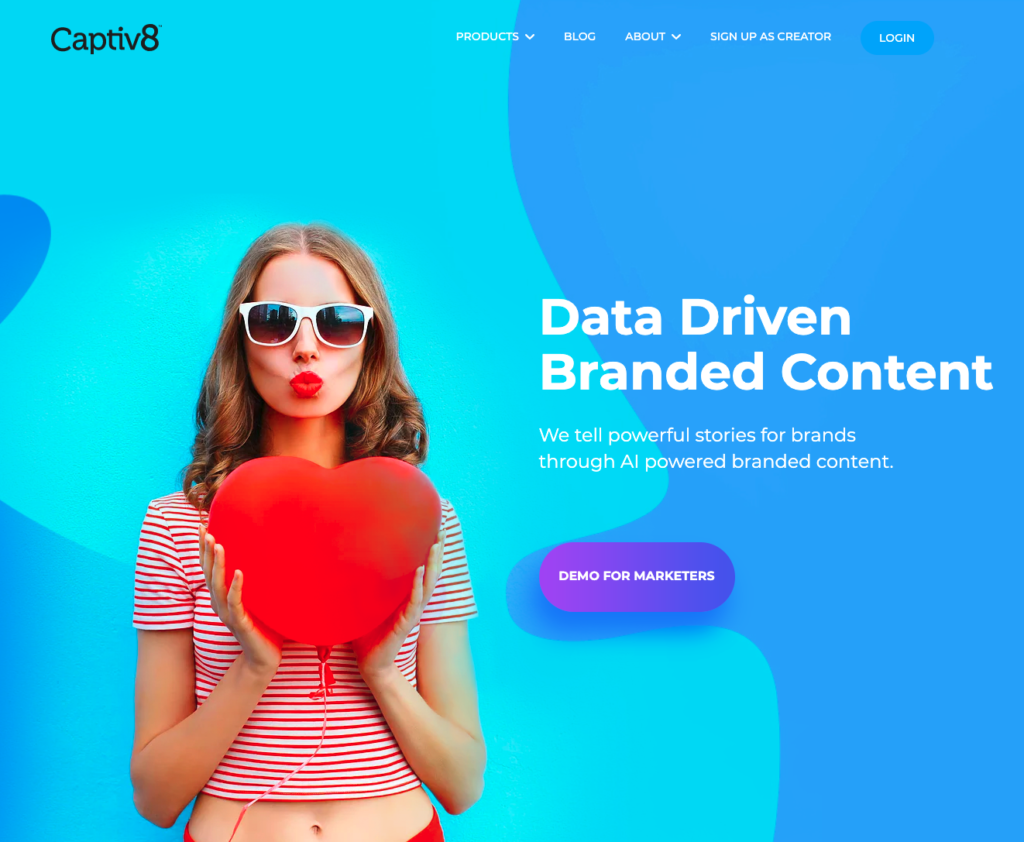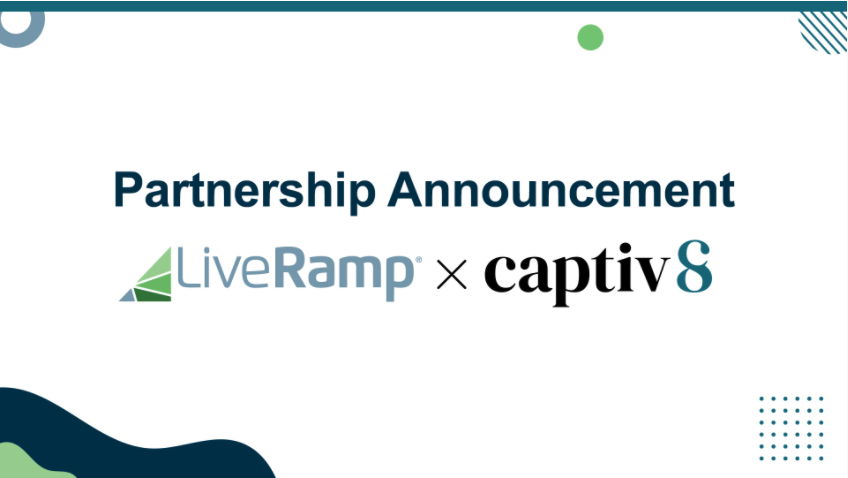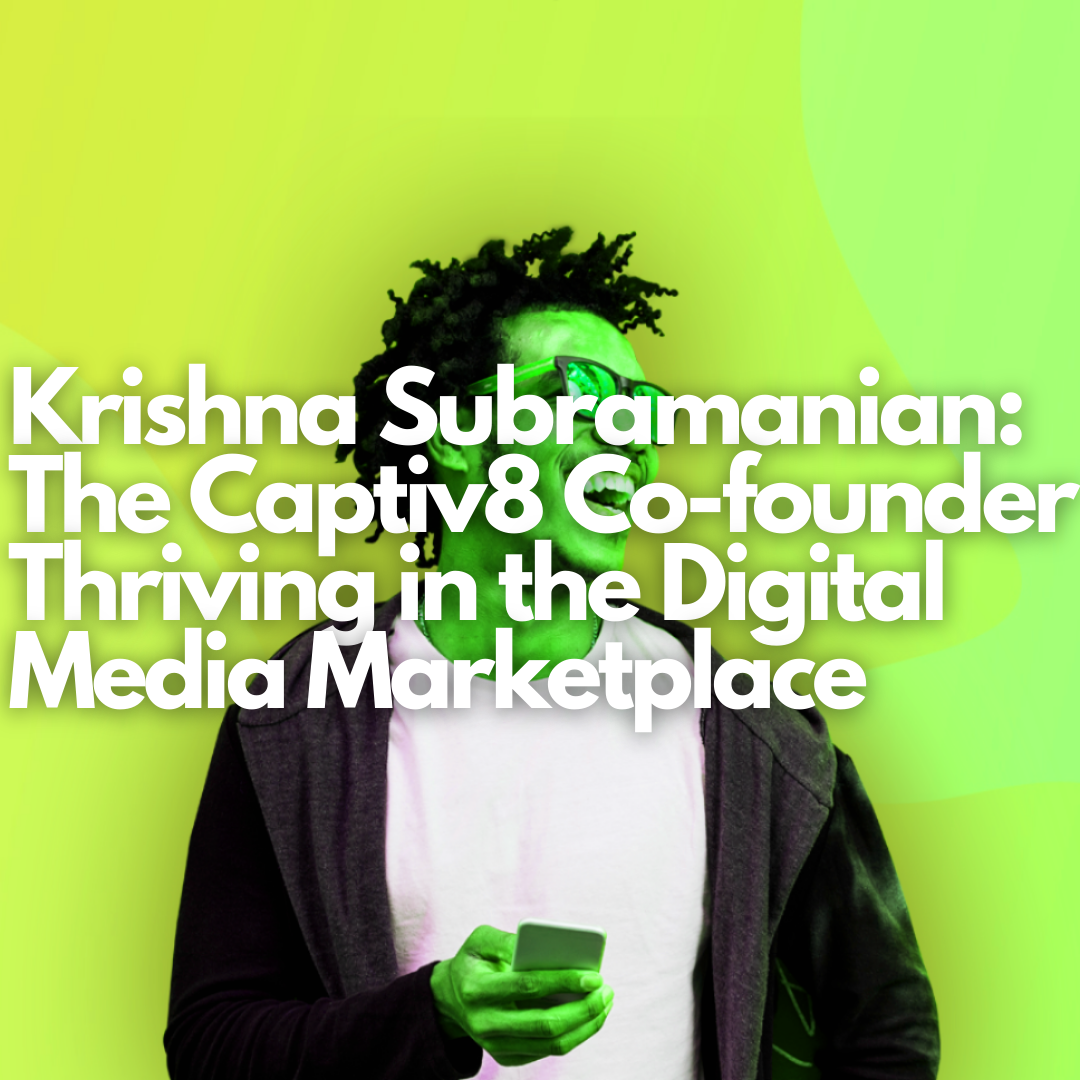Platform
Krishna Subramanian: The Captiv8 Co-founder Thriving in the Digital Media Marketplace
Long-term brand-creator collaboration is the way to go. A brand wants to ‘get married’ to its influencers because that’s what makes a marketing campaign be perceived as authentic. That’s what’s going to drive better results from the influencer’s audience. No one wants one-off posts by the creator talking up a brand because that’s going to look fake.
Krishna Subramanian is a co-founder of Captiv8, an influencer marketing platform that organizes social data and provides products and services that connect brands to content creators. He is a serial tech entrepreneur, angel investor and commentator on mobile advertising. He was a founding employee of BlueLithium (acquired by Yahoo) and co-founder of Mobclix (acquired by Velti).

Co-founder of Capitv8
Krishna has a background in the digital media marketplace but throughout high school and college, he had always wanted to be a doctor and orthopedic surgeon. He joined UC Davis as a medical microbiology major. Once he got into med school, Krishna took a year off to work in the New York Academy of Medicine and do research on prehospital cardiac care.
“I was living in my uncle and aunt’s basement in Queens. And so I was doing research in the day and I was coming home at night and staying up all night, building websites and apps, and doing other random jobs off of Craigslist, essentially. And one thing led to another, I ended up dropping out of research, putting med school on hold and ended up starting a series of companies.”
The first was BlueLithium, an online advertising company where he led product and marketing while building out an affiliate lead generation platform.
“I was just really interested in retargeting. We managed to get a pixel on Yahoo’s homepage and that spurred acquisition by Yahoo for $300 million. I stayed there for about three months and ended up taking off and then teamed with Sunil and Vishal who are the two co founders of my current company but we started our first company called Mobclix”
Established in 2008, Mobclix was a mobile ad exchange that helped developers make money off their free apps on the app store. It had an SDK integrated into about 100,000 apps doing about 80 billion impressions per month. Mobclix was acquired by Velti. Krishna stayed at Velti as CMO running product marketing, corporate marketing, research and operations, and the advertising business unit. He left Veli after about two years.
“I got really interested in just different ideas and investing in companies. I started a family office called team in residence and made probably about 50 different investments into companies like Zenefits, Instacart and DrChrono.”
As he was doing this, Krishna grew interested in what was happening in the social media space.
“I started to see how Millennials were spending a lot less time in front of the TV and more time in front of platforms like Instagram. YouTube, Snapchat. As they were changing the way they were consuming content, a lot of these brands were changing the way they engage with Millennials. They realized a Millennial is not necessarily going to click a banner and buy something. But they are highly influenced by these digital celebrities. And so that was the basis of how Captiv8 came about.”
Captiv8 in the Digital Media Marketplace
Captiv8 started off as a social listening platform on Instagram.
“The idea was to help brands identify their Oprah effect. Is there a way to predict virality and measure the velocity of content being shared on Instagram specifically? We went down to Los Angeles and the Bay Area, ended up meeting with a lot of talent agencies and started to ask them, you know, if there was a way to leverage this data. They said, “Hey, this is a great idea but we don’t want to share it with the brands.” And so that’s how it started out.”
Captiv8 connects brands to digital influencers through an end to end platform. According to Krishna, it focuses on three areas.
First, a discovery platform for finding influencers based on age, gender, location, brand affinity and more.
Second, a workflow for activating an influencer including approving influencers, contract and payment.
Third, measurement and reporting including attribution, sales, downloads, installs and other required metrics.

Whereas Captiv8 primarily focuses on enterprise brands, it is a two-sided marketplace that serves creators as well.
On the enterprise brands side, Captiv8 works with global brands such as Nissan, Twitter, Verizon and Craft Science. “The brands pay for the platform,” Krishna says.
On the influencer side, the company works with creators through roughly 80% of the top talent agencies. Creators can also work with Captiv8 directly.
“You can think of it like a Yelp restaurant owner that claims their page. Creators can come to the platform and claim their creator page so they can update their profiles and their contact info and just add additional metadata.”
Measuring influencer marketing performance
Krishna emphasizes it is important that the creator and brand understand the specific KPIs and how the brand will judge performance.
“What does success look like for the brand? Because, you know, if a brand comes out and says, I’m hoping for this content to go viral, versus I’m hoping to drive sales, versus I’m hoping to drive a conversation, each is a very different type of creative execution. And I think the creator needs to know that so that they can build and execute accordingly.”
He says there are two ways to look at influencer performance metrics all depending on the campaign objective.
For brands targeting the top of the sales funnel, the goal is to drive attention, awareness and views. The metrics they will look at will therefore include brand lift, purchase intent and brand sentiment.
For direct response advertisers, the focus is on hard metrics such as installs, purchases and signups.
Tips for identifying and working with influencers
Krishna recommends brands create long-term partnerships with influencers.
“A brand wants to get married to the influencers because that’s what becomes super authentic. And that’s what’s going to drive better results from their audience. No one wants those one-off posts or ‘one night stands’ with the creator because that’s going to look fake.”
He cautions brands not to allow subjectivity in choosing creators.
“Brands might pick a creator because it is someone they are in love with or their kid is in love with. There’s almost like this infatuation they have for the creator and so they want to be ‘cool’. And it might not be a great fit for the brand. I can’t tell you how many times we’ve had CMOs of Fortune 500 companies forming a partnership with a top tier influencer just to be cool in front of their kinds. And that sometimes throws things off because it might not be the best fit.”
For brands who want more creative control over the influencer, Krishna recommends working with a tier 2 or tier 3 creator (that is, more of a micro influencer).
“But if a brand is trying to drive the creative execution for a tier 1 digital influencer, you’re almost countering the power of what that influencer has. The influencer already knows how to talk to their audience and that’s why you are partnering with them.”
To ensure they partner with the right creators, brands should evaluate influencers based on their past activities.
“A lot of the data on our platform, for example, will show you brand safety. Has this creator talked about things like politics, racism, bullying, adult content, profanity? So you’ll get a good idea of what a creator looks like in terms of the content they post and their audience. And you can look at a creator’s previous brand partnerships to get an idea of what sorts of brands they’ve partnered with, how has that content performed with their audience, and does their audience respond to branded content.”
He suggests starting with a large pool of influencers then narrowing down.
“Have them all go out and post content around a specific campaign. You start to measure the performance of each of those influencers across their different audiences. Maybe it’s one post or two posts but it gives you a decent sample set so that you can start to see how things are performing. And then you can narrow it down and create a longer-term partnership with three or four influencers.”
Recent developments at Captiv8
Krishna mentions two significant developments at Captiv8.
First, the company launched a partnership with LiveRamp. He says it is the first time that LiveRamp has partnered with an influencer marketing platform.

“So what we’re doing is we’re allowing brands to identify influencers based on their existing customer database. And now what we’ll do is brands that are going to LiveRamp and saying, “I want to buy influencers based on my customer data set”, LiveRamp partners with Captiv8 to be able to identify who those influencers are that have an overlap in audience with their customers.”
Second, Captiv8 is reaching beyond its traditional focus on enterprise brands.
“We’ve recently over the last quarter or so started opening up our platform for SMBs in D to C brands. We’ve partnered with a lot of e-commerce platforms like Shopify, Magento and Salesforce Commerce Cloud. And that’s really to help a lot of these SMBs use influencers to drive sales across their platforms.”













